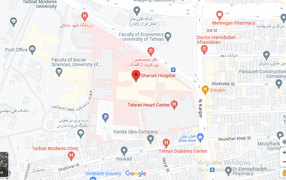Efficacy of iranian made bone substitutes for regeneration of rabbit calvarial bone defects: cenobone versus the ITB
Abstract
Introduction: Efforts are being made to improve the efficacy of biomaterials used as bone substitutes for bone regeneration in the oral and maxillofacial region. Graft materials have been recently produced in Iran; however, studies are required to confirm their efficacy. This study aimed to compare the histomorphometric results of using mineralized allografts produced by the Hamanandsaz Baft Kish Company and the Iranian Tissue Bank (ITB) for regeneration of rabbit calvarial bone defects.Materials and Methods: In this animal study, four similar holes with a minimum diameter of 6.5 mm were created in the calvaria of 14 white New Zealand rabbits. The defects were filled with Cenobone (Hamanandsaz Baft Kish Co.), ITB product and Cerabone (Botiss Co). One defect remained unfilled as the control group. One and two months after implantation, the animals were sacrificed and the defects was subjected to histologic and histomorphometric assessments. The amount of new bone formation and the volume of remaining biomaterials were analyzed using one-way ANOVA. The inflammatory reaction was analyzed by the Kruskal Wallis test and the foreign body reaction, bone quality and bone-graft interface pattern were analyzed using the Fisher’s exact test.Results: The amount of new bone formation was 0.060.1± and 0.11± 0.1, 0.040.08± and 0.110.09±, and 0.080.12± and 0.090.06± mm2 in the ITB, Cerabone and Cenobone groups at one and two months post-implantation, respectively.The effect of time and type of biomaterial on the amount of new bone formation was not significant. At one month, significant differences were seen in the amount of remaining biomaterials in the defects among the three groups (P<0.05). The highest amount of remaining biomaterial was noted in the Cenobone and Cerabone groups. At two months, this difference was not statistically significant. At one month, moderate inflammation was noted in most defects and no difference was found among the groups (P<0.04). At two months, mild inflammation was observed in most defects with no statistically significant difference among them. Conclusion: Bone allografts such as Cenobone and ITB had optimal efficacy for bone regeneration in rabbit calvarial defects comparable to that of Cerabone xenograft. Considering the limitations of in vitro studies, application of these biomaterials must be evaluated in clinical studies.Keywords: Bone formation, Cenobone, Cerabone, Calvarial defects



